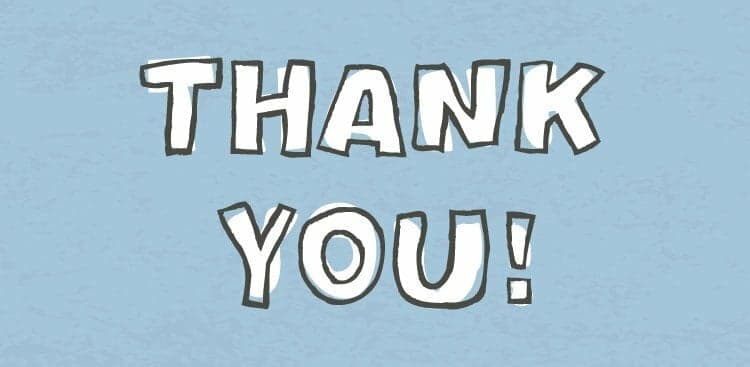There’s an early detail in the Spike Jonze film Her which at once captures and ridicules the potency of handwritten notes. The main character, played by Joaquin Phoenix, is a gainfully employed writer named Theodore Twombly. As it happens, he works for a company called BeautifulHandwrittenLetters.com, which composes love notes as a service. (The movie is set in Los Angeles in the not-too-distant future.)
The message is clear: In the future—even if you lack the time or talent to summarize your heartfelt emotions—not to worry. You can hire a sensitive chap like Twombly to do the job.
For now, though, you’ll have to craft your own handwritten notes. With Thanksgiving around the corner, here are five keys to composing kick-ass thank you notes that are straight from the heart:
1. Write Out the Recipient’s Name
It may sound obvious. But using a salutation has actually become a classy formality, given the greeting-less exchanges of today’s correspondence media (texting, email, online chatting).
2. Don’t Sweat the Bottle, Sweat the Message Within
If your note of thanks is emotional or important, you may feel pressure to find the perfect thank you card—the one whose outside message and image perfectly complement the feelings you’re hoping to convey in your handwritten words on the inside.
But your time is better spent focusing on the message you’re writing within the card. Think back to the last thank you note you cherished. Can you remember what the outside looked like? Probably not. But you certainly remember the sender and the message.
If you remember what the outside looked like, it’s probably because you kept the note someplace you could look at frequently. But the reason you kept it was not for what was on the outside.
Count Peter Gasca, co-founder of Wild Creations, among the entrepreneurs who are a fan of focusing on the inside of cards. “You can find simple, blank cards in the clearance aisle at OfficeMax or at Dollar General,” writes Gasca, who uses the cards both to express thanks and to build relationships. “Buy a box and keep a few with you at all times.”
3. Specify Why You’re Expressing Appreciation
This is the hard part. This is the reason the future could potentially include employees like Twombly and companies like BeautifulHandwrittenLetters.com.
Fortunately for today’s note writers, there are time-honored techniques you can use that will help you articulate why you’re thankful. Here are three of them:
-
Have a chat with a mutual friend or colleague who knows the recipient of your thank you note. Explain to this mutual friend why you want to say thank you. In the course of this casual conversation, through the simple back-and-forth process of routine dialogue, you’ll come closer to zeroing in on the heart of your message.
-
Single out a memorable moment. You’re likely thanking the recipient for an action or an accomplishment—something he or she did. What was it about the action that stood out? What did the recipient do differently from what most others would have done? Why was it special or memorable for you, given your life experiences? Answer these questions, and you’ll have everything you need to craft a heartfelt handwritten note.
-
Write out a rough draft. Show it to the mutual friend or someone else you trust for feedback. Clarity matters more than eloquence. The reason for your gratitude—that standout action or accomplishment—is what you’re hoping to capture. If the reader of your rough draft understands exactly why you’re expressing your thanks to the recipient, you’ve done your job.
Keep in mind, your note doesn’t have to be long. Geil Browning’s article, “How to Thank Your Employees in Only Eight Words,” lists several “thank you” templates in which brevity is king.
4. Feel Free to Thank Someone You Haven’t Seen or Spoken to in a While
In his superb article on the many types of handwritten notes you can write (for giving thanks and for other occasions), Jeff Haden points out that you need not limit your message of thanks to someone who’s helped you this month or this year:
At some point, someone saw you struggling and gave you hope. At some point, someone saw something in you that you didn’t yet see in yourself. Who you are today is a direct result of that person’s faith in you.
Why not write a note to this person? There’s no reason you shouldn’t thank them for how much their belief in you has mattered, over the long haul.
5. Spend Time on the Sign-Off
In the same way today’s correspondence media have all but eliminated salutations, sign-offs of all stripes—sincerely, truly, cheers, warm regards—seem to be going extinct.
You should have two main goals in the sign-off. First, you don’t want to sign off with a term that undermines the emotions you just expressed in your note. If you just thanked someone for something that was meaningful and sensitive, the last thing you want to do is sign off with “cheers,” which is generic and celebratory.
Second, you don’t want to sign off with redundant terms. “Thank you” and “many thanks” are polite, but you just wrote an entire note saying thank you. “Sincerely” smacks of insincerity in the same way the verbal preface of “to be honest” or “honestly” smacks of dishonesty.
A sign-off like “yours,” while commonplace, works for a wide range of occasions and situations. And if your note has already accomplished the emotional heavy-lifting, feel free to skip the sign-off altogether. And just sign your first name.

